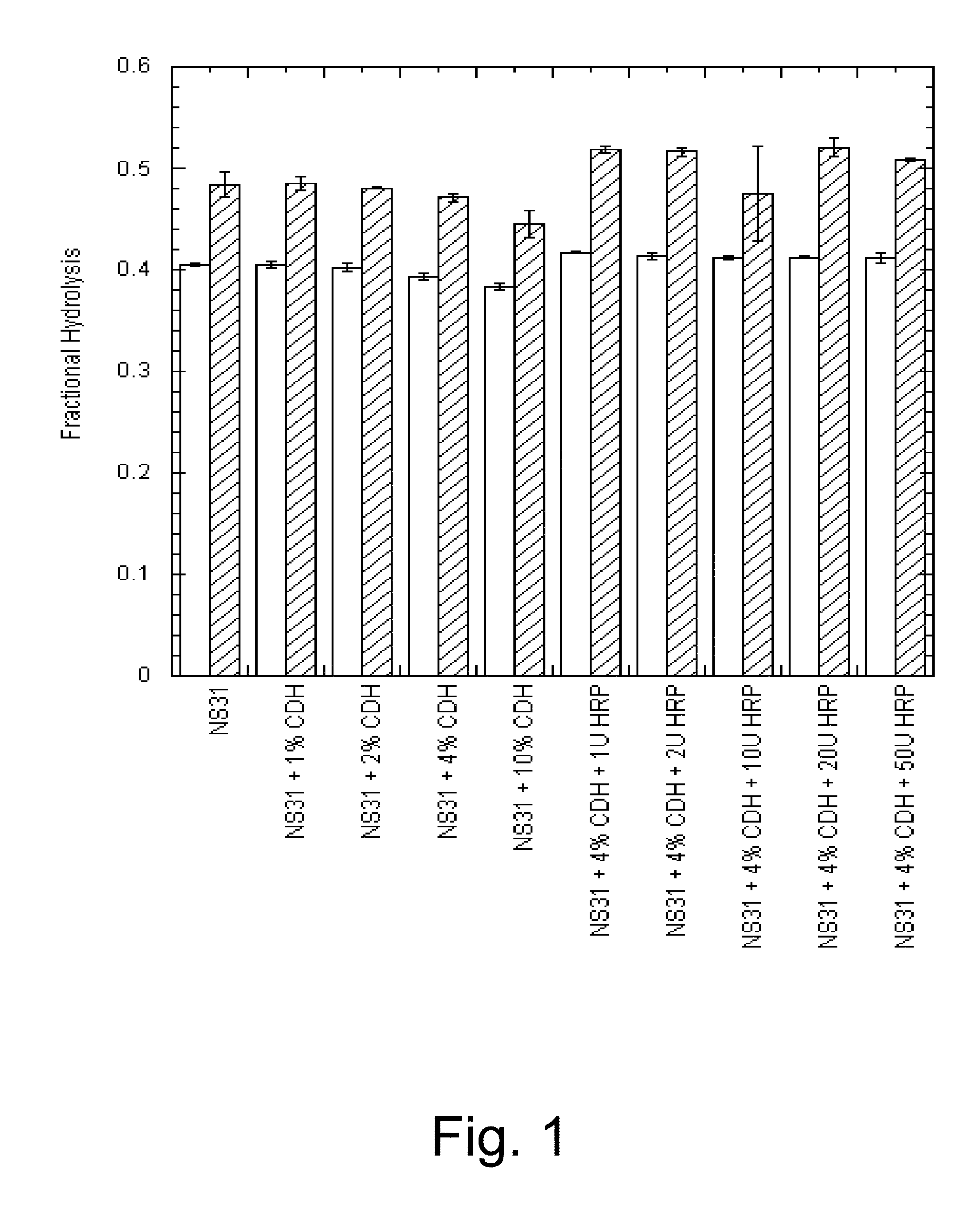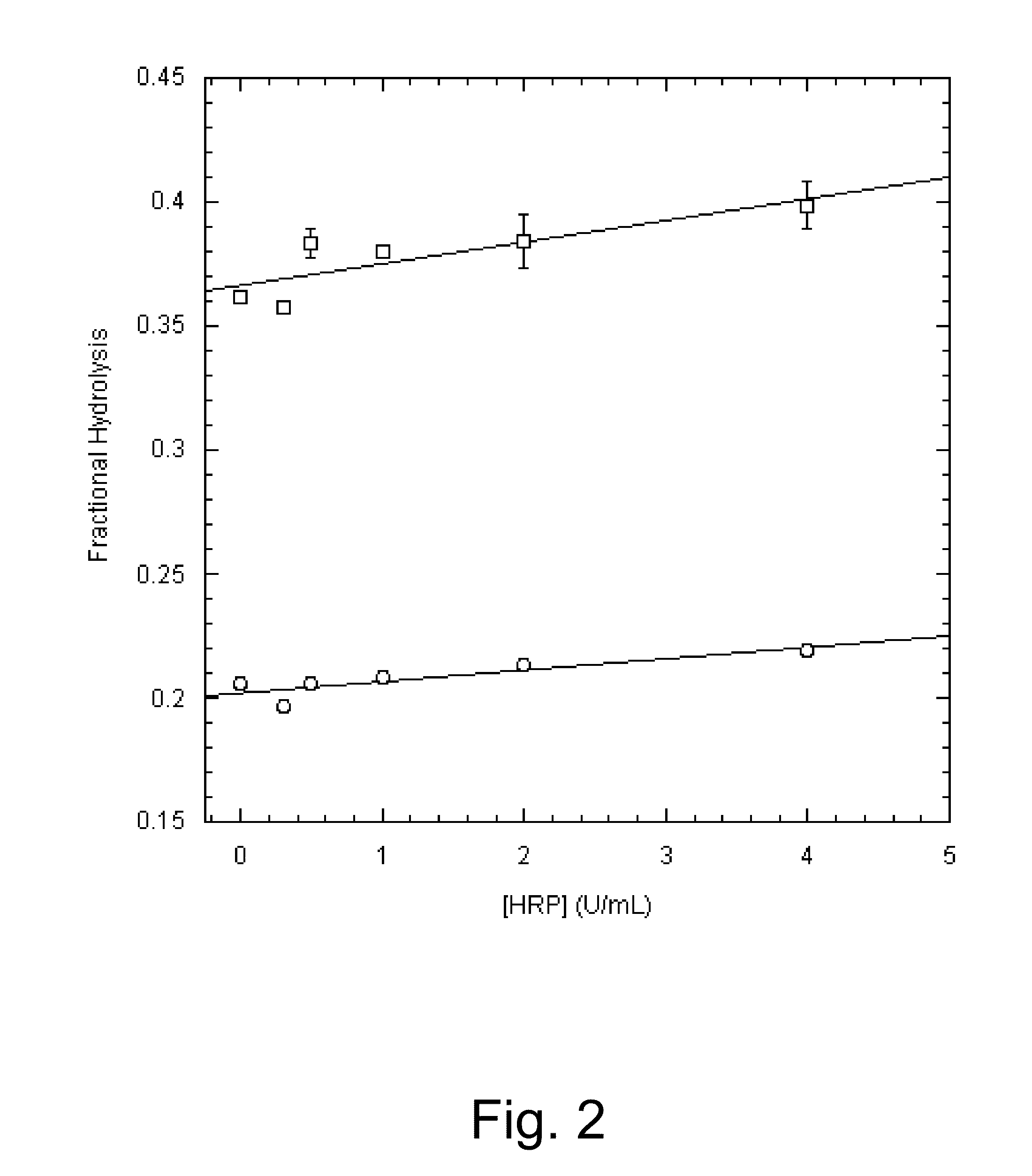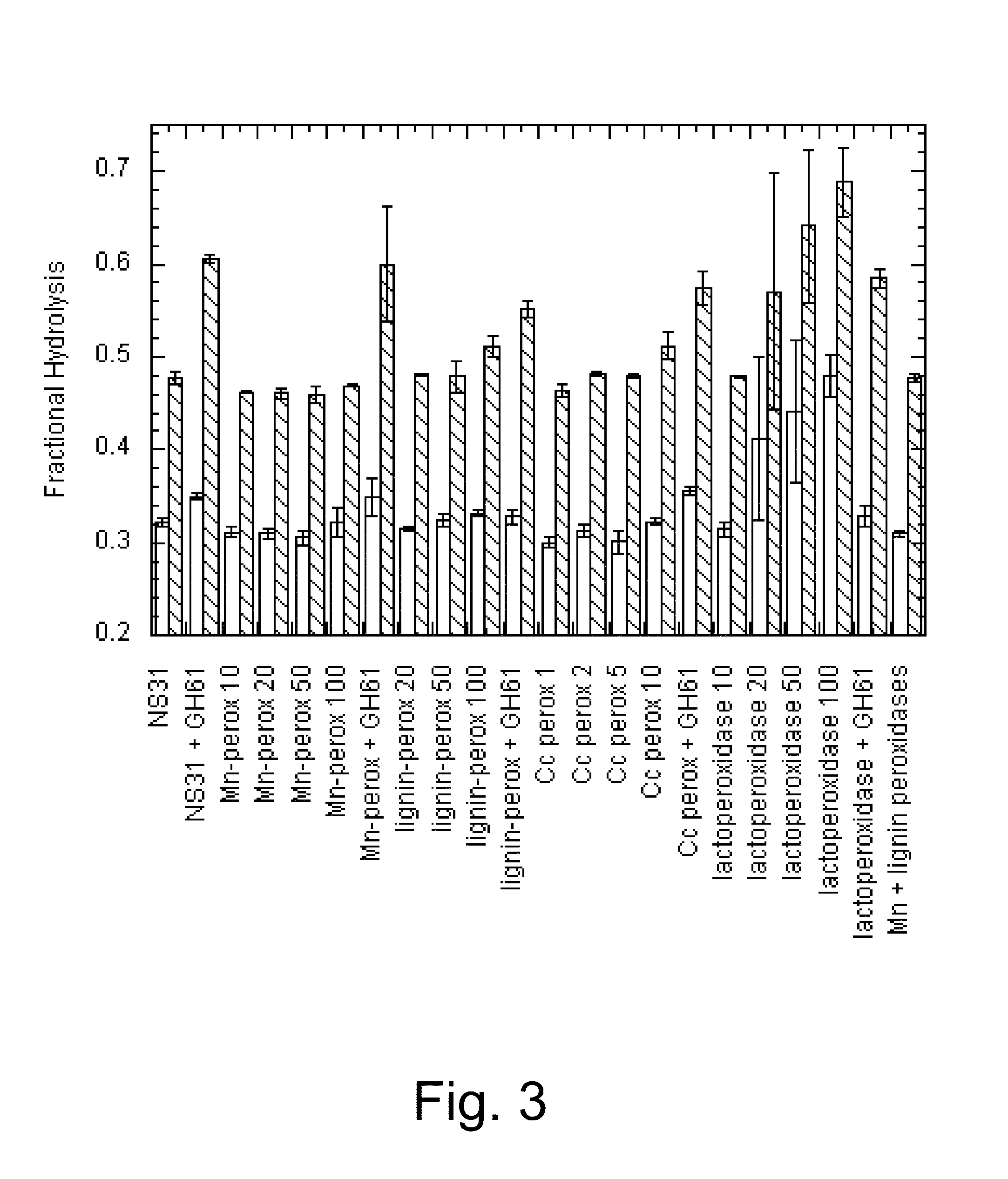Methods for increasing enzymatic hydrolysis of cellulosic material in the presence of a peroxidase
a cellulosic material and peroxidase technology, applied in the direction of oxidoreductases, biofuels, fermentation, etc., can solve the problems of biomolecule oxidation such as dna, lipids or proteins, and achieve significant problems in biological systems
- Summary
- Abstract
- Description
- Claims
- Application Information
AI Technical Summary
Benefits of technology
Problems solved by technology
Method used
Image
Examples
example 1
Growth of Myceliophthora thermophila CBS 117.65
[0377]Two plugs from a PDA plate of Myceliophthora thermophila CBS 117.65 were inoculated into a 500 ml shake flask containing 100 ml of shake flask medium to obtain culture broth for the purification of a cellobiose dehydrogenase. PDA plates were composed of 39 g of potato dextrose agar and deionized water to 1 liter. The shake flask medium was composed of 15 g of glucose, 4 g of K2HPO4, 1 g of NaCl, 0.2 g of MgSO4.7H2O, 2 g of MES free acid, 1 g of Bacto Peptone, 5 g of yeast extract, 2.5 g of citric acid, 0.2 g of CaCl2.2H2O, 5 g of NH4NO3, 1 ml of trace elements solution, and deionized water to 1 liter. The trace elements solution was composed of 1.2 g of FeSO4.7H2O, 10 g of ZnSO4.7H2O, 0.7 g of MnSO4.H2O, 0.4 g of CuSO4.5H2O, 0.4 g of Na2B4O7.10H2O, 0.8 g of Na2MoO2.2H2O, and deionized water to 1 liter. The shake flask was incubated at 45° C. on an orbital shaker at 200 rpm for 48 hours. Fifty ml of the shake flask broth was used t...
example 2
Purification of Myceliophthora thermophila CBS 117.65 Cellobiose Dehydrogenase
[0379]The Myceliophthora thermophila CBS 117.65 harvested broth described in Example 1 was centrifuged in 500 ml bottles at 13,000×g for 20 minutes at 4° C. and then sterile filtered using a 0.22 μm polyethersulfone membrane (Millipore, Bedford, Mass., USA). The filtered broth was concentrated and buffer exchanged with 20 mM Tris-HCl pH 8.5 using a tangential flow concentrator (Pall Filtron, Northborough, Mass., USA) equipped with a 10 kDa polyethersulfone membrane (Pall Filtron, Northborough, Mass., USA). To decrease the amount of pigment, the concentrate was applied to a 60 ml Q-SEPHAROSE BIG BEAD™ column (GE Healthcare, Piscataway, N.J., USA) equilibrated with 20 mM Tris-HCl pH 8.5, and eluted stepwise with equilibration buffer containing 600 mM NaCl. Flow-through and eluate fractions were analyzed by SDS-PAGE using 8-16% CRITERION™ SDS-PAGE gels (Bio-Rad Laboratories, Inc., Hercules, Calif., USA) and s...
example 3
Pretreatment of Corn Stover
[0383]Corn stover was pretreated at the U.S. Department of Energy National Renewable Energy Laboratory (NREL) using dilute sulfuric acid. The following conditions were used for the pretreatment: 1.4 wt % sulfuric acid at 165° C. and 107 psi for 8 minutes. According to NREL, the water-insoluble solids in the pretreated corn stover (PCS) contained 56.5% cellulose, 4.6% hemicellulose and 28.4% lignin. Cellulose and hemicellulose were determined by a two-stage sulfuric acid hydrolysis with subsequent analysis of sugars by high performance liquid chromatography using NREL Standard Analytical Procedure #002. Lignin was determined gravimetrically after hydrolyzing the cellulose and hemicellulose fractions with sulfuric acid using NREL Standard Analytical Procedure #003. The PCS was washed with a large volume of DDI water on a glass filter.
PUM
| Property | Measurement | Unit |
|---|---|---|
| pH | aaaaa | aaaaa |
| pH | aaaaa | aaaaa |
| pH | aaaaa | aaaaa |
Abstract
Description
Claims
Application Information
 Login to View More
Login to View More - R&D
- Intellectual Property
- Life Sciences
- Materials
- Tech Scout
- Unparalleled Data Quality
- Higher Quality Content
- 60% Fewer Hallucinations
Browse by: Latest US Patents, China's latest patents, Technical Efficacy Thesaurus, Application Domain, Technology Topic, Popular Technical Reports.
© 2025 PatSnap. All rights reserved.Legal|Privacy policy|Modern Slavery Act Transparency Statement|Sitemap|About US| Contact US: help@patsnap.com



